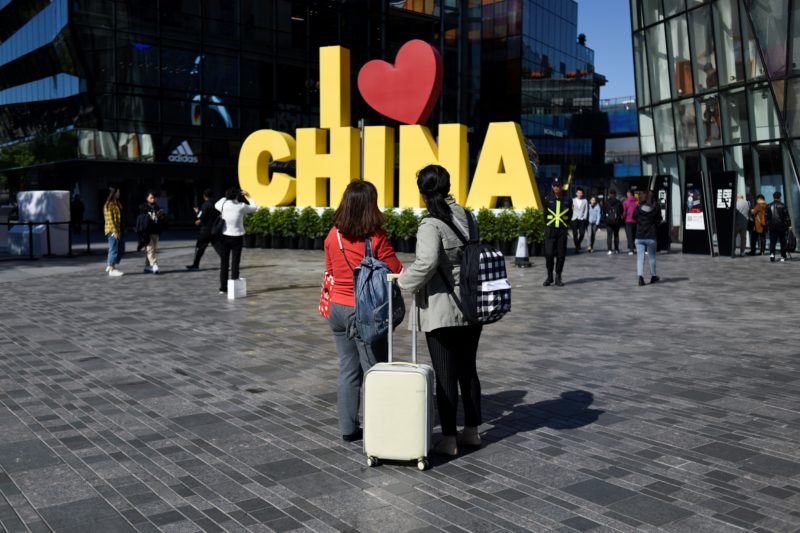China’s GDP growth slows to 6% in third quarter: AFP poll
Beijing’s efforts to step up support for the economy have not been enough to offset the blow from softening domestic demand (WANG Zhao)
Beijing (AFP) – China’s economy expanded at its slowest rate in nearly three decades during the third quarter, held back by cooling domestic demand and a protracted US trade war, according to an AFP survey of analysts.
Gross domestic product (GDP) figures due on Friday are expected to show that the Chinese economy expanded 6.0 percent in July-September, from 6.2 percent in the second quarter, the poll of 13 economists predicted.
The reading would mark the worst quarterly figure since 1992 but be within the government’s target range of 6.0-6.5 percent for the whole year. The economy grew at 6.6 percent in 2018.
Beijing has stepped up support for the economy with major tax and rate cuts and has scrapped foreign investment restrictions in its stock market.
But the efforts have not been enough to offset the blow from softening demand at home.
The trade conflict and weak domestic demand prompted the International Monetary Fund to lower its 2019 growth forecast for China from 6.2 percent to 6.1 percent on Tuesday.
The long-running trade war with the US has also chipped away at the Chinese economy.
The Asian powerhouse reported this week weaker-than-expected import and export figures for September after Washington imposed new tariffs that month, triggering a tit-for-tat response from Beijing.
“Trade conflict with the US remains a wild card,” said Tommy Wu from Oxford analytics.
“Elevated US-China tension will continue to weigh on the external outlook, despite the delay of additional US tariff imposition on a range of consumer goods… And we think that a US-China trade deal remains unlikely any time soon.”
A partial US-China deal announced by President Donald Trump last week offers a temporary reprieve from further tariff hikes.
But this initial agreement — which included increasing US farm product purchases, and protections for intellectual property — will take weeks to finalise and does not tackle thornier issues such as Chinese subsidies to state firms.
– Fresh support –
Tariffs already in place on hundreds of billions of dollars in two-way trade will also remain.
Negotiators will hold phone talks this week and the next.
To give its economy a shot in the arm, Beijing pushed forward a raft of stimulus measures earlier this year including higher tax reimbursement rates for exporters dealing with US tariffs.
It also boosted bank lending and increased spending on major infrastructure projects including roads and railways.
The policies buoyed the economy in March and brought in 6.4 percent growth for the first quarter, but their impact was short-lived and Beijing was still not out of the woods, analysts said.
“In the near term, slowing IP (intellectual property) growth and rapidly falling pork production will likely drive real GDP growth to less than 6.0 percent for the first time since the quarterly series was first released in 1992,” said Lu Ting of Nomura bank.
Policymakers are likely to take further action, analysts said.
Premier Li Keqiang on Monday told provincial governors that the country should step up efforts to enhance the economy’s resilience, address downward pressure, and increase employment.
“We predict the People’s Bank of China is likely to loosen credit conditions further, which might involve lower policy interest rates,” said Xu Xiaochun, an economist at Moody’s.
“However, any further loosening will be tempered by the ongoing need to keep debt risks in check following previous excesses,” Xu said.
But, he added: “Ensuring demand does not dip too far in the short run is a more imminent priority, whereas the danger of elevated debt is a more distant problem.”
burs-prw/lth/mtp/dan
Disclaimer: Validity of the above story is for 7 Days from original date of publishing. Source: AFP.


